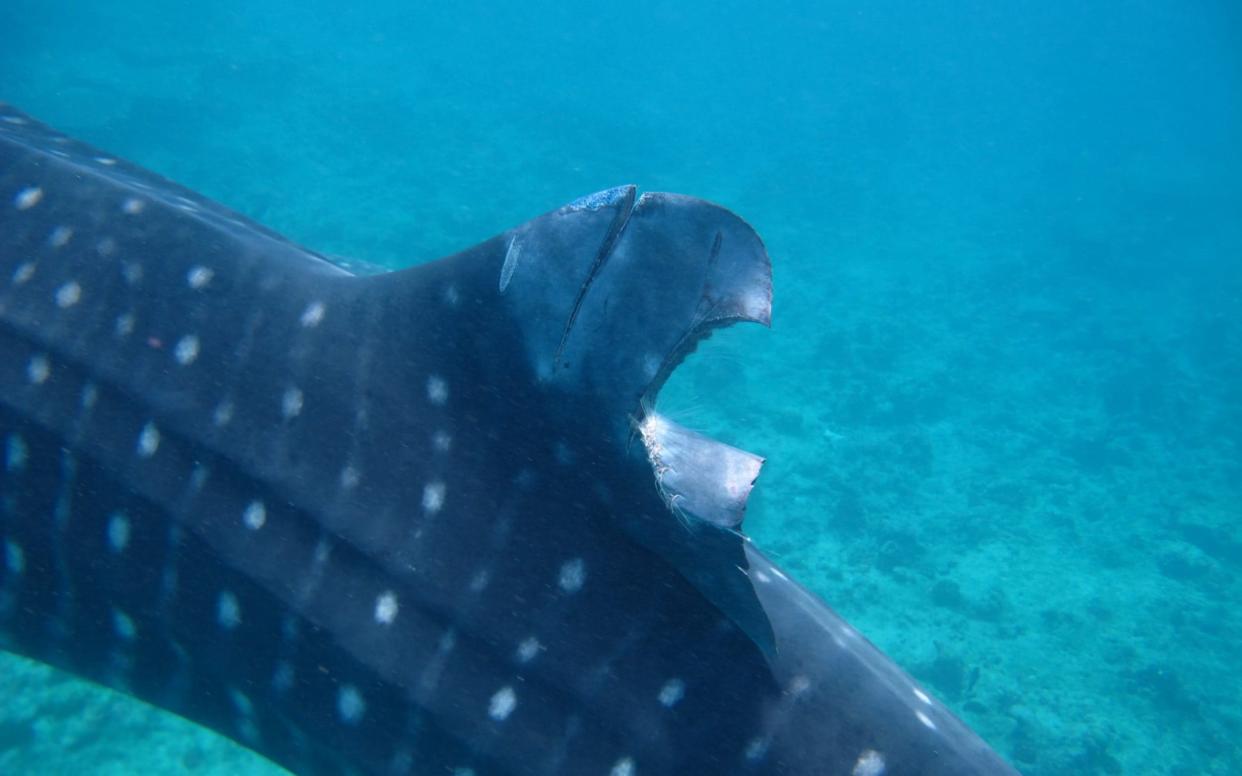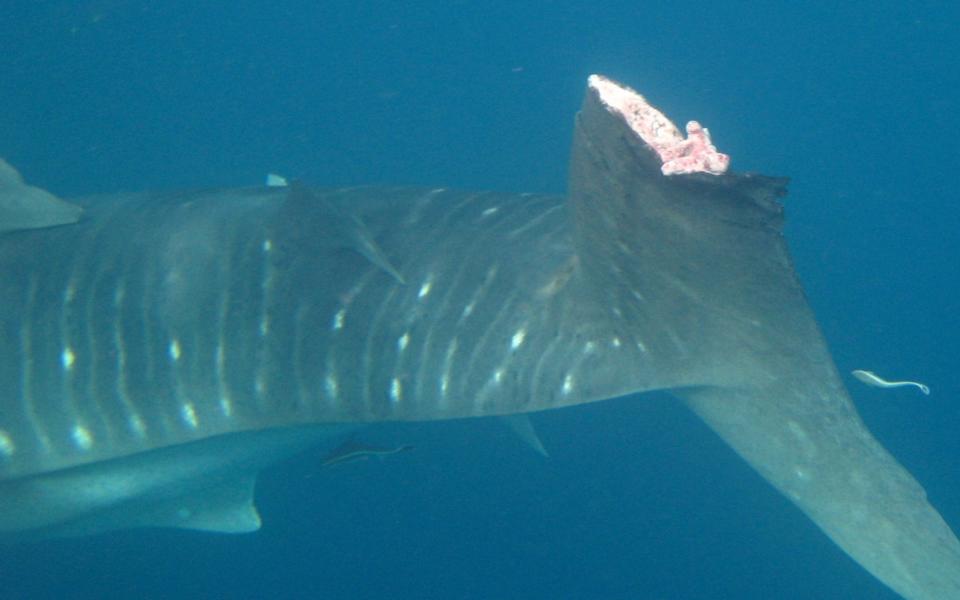Whale sharks can re-grow partially amputated dorsal fins

Whale sharks can re-grow partially amputated dorsal fins, British scientists have found.
The world’s largest fish is able to heal at an extraordinary rate with lacerations and abrasion healing in a matter of weeks, a new study by the University of Southampton has found.
The endangered shark, which can grow to up to 18 metres in length, has become increasingly popular with tourists meaning they’re more likely to collide with boats.
Until now very little was known about the impact from such injuries and how the whale sharks can recover.
But new research has found that they are able to re-grow a partially amputated first dorsal fin. The observation is the first time a shark has ever been scientifically reported exhibiting this phenomenon.
“We were able to determine that these sharks can heal from very serious injuries in timeframes of weeks and months," lead author Freya Womersley, a PhD student with University of Southampton based at the Marine Biological Association said. “This means that we now have a better understanding of injury and healing dynamics, which can be very important for conservation management.”
Researchers examined photographs of the sharks in two aggregation sites in the Indian Ocean and used the species’ unique spot markings to identify individuals and monitor regional populations.
This method allowed the team to compare photographs taken without specialist equipment over time and monitor how individual wounds changed.

The study, published in the journal Conservation Physiology, found that by Day 25 major injury surface area decreased by an average of 56 per cent and the most rapid healing case showed a surface area reduction of 50 per cent in four days.
All wounds reached a point of 90 per cent surface area closure by Day 35 with spot markings even forming over previously injured spots.
But they also found variation within healing rates, with lacerations and abrasions, typical of propeller injuries, taking 50 and 22 days to reach 90 per cent healing, respectively.
The authors note that there may be many other less recognisable impacts of injuries, such as reduced fitness, foraging capacity and altered behaviours.
The research hopes to help estimate, based on how old the injury is, how it might have been inflicted and prevent further harm to the declining population.
Recent research stated that 71 per cent of pelagic sharks have declined over the last 50 years and Miss Womersley hopes this research might be used as evidence to safeguard the sharks' future.
She added: “Whale sharks have been experiencing population declines globally from a variety of threats as a result of human activity.
“Therefore, it is imperative that we minimise human impacts on whale sharks and protect the species where it is most vulnerable, especially where human-shark interactions are high.”

